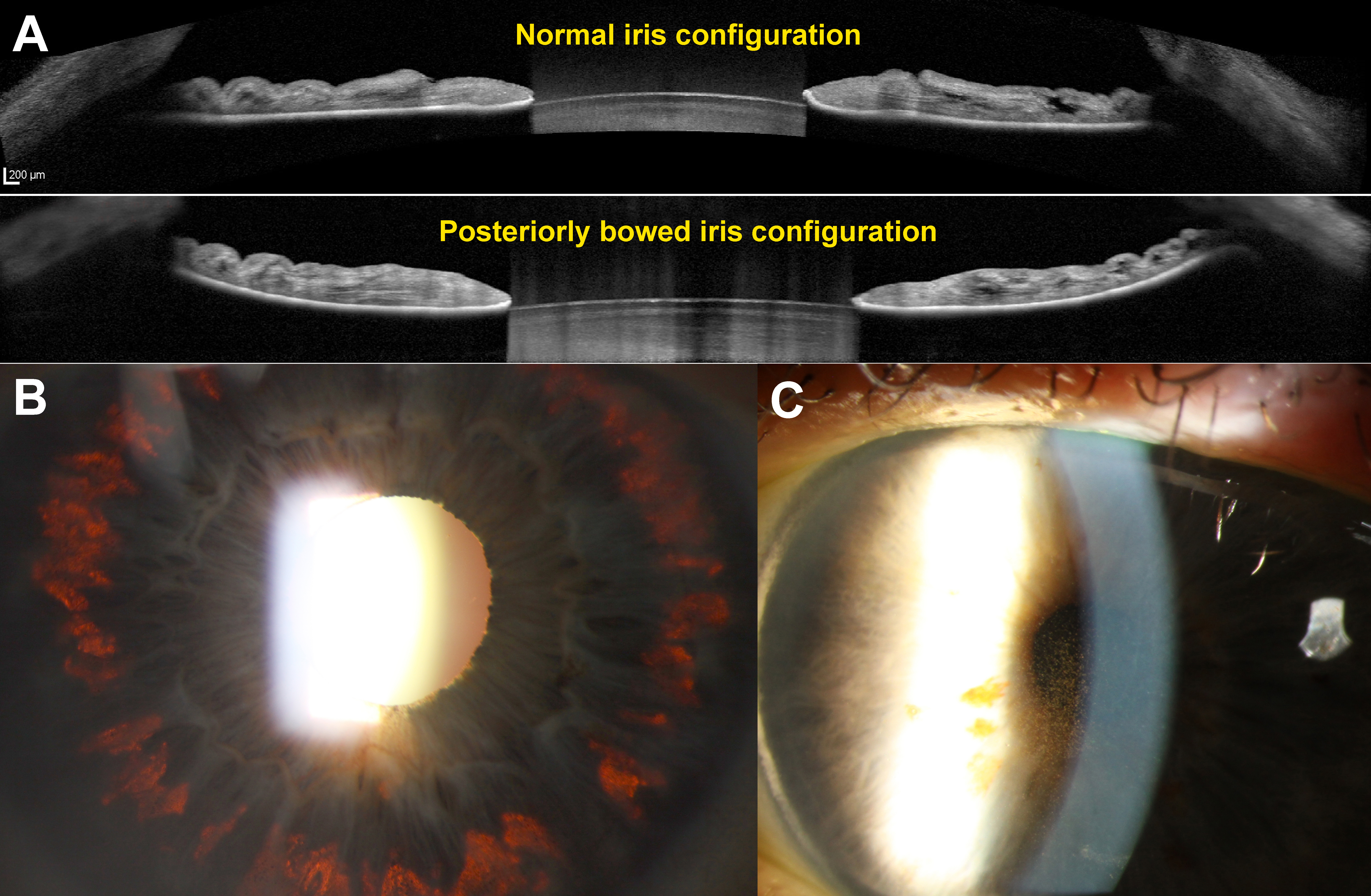 |
| This study identified a seven-fold increase in risk of pigmentary iris degeneration and a four-fold increase in likelihood of pigmentary glaucoma in patients on topical moxifloxacin. Photo: Henrietta Wang, BOptom, MPH, and Jack Phu, OD, PhD. Click image to enlarge. |
Recent case reports have linked two new conditions to oral and topical fluoroquinolone antibiotic use: bilateral acute depigmentation of the iris (BADI; characterized by non-progressive diffuse depigmentation and atrophy of the iris stroma, without transillumination defects seen) and bilateral acute iris transillumination (BAIT; similar presentation to BADI but more severe, involving pupil distortion and iris epithelium depigmentation that results in anterior chamber angle and corneal endothelium depositions). Most reported cases affected phakic middle-aged women with a preceding upper airway infection and recent moxifloxacin therapy.
To help examine and quantify the risk of these conditions in patients taking fluoroquinolone, researchers conducted a retrospective cohort study with a case-control analysis. Their findings, published recently in Eye, suggested a seven-fold increase in likelihood of pigmentary iris degeneration and a four-fold increase in risk of pigmentary glaucoma in patients using topical moxifloxacin, though the researchers clarified, “the absolute increase was low.”
The study followed a cohort of more than 1,200,000 new users of oral or topical moxifloxacin, levofloxacin and azithromycin until first diagnosis of pigmentary degeneration of the iris or pigmentary glaucoma. In total, 542 cases of the former condition and 460 cases of pigmentary glaucoma were identified. The researchers calculated the incidence of either condition in patients taking topical moxifloxacin as 10.2/1000 person-years compared to 2.6/1000 person-years for topical azithromycin. The highest adjusted incidence rate ratio for pigmentary iris degeneration or pigmentary glaucoma belonged to patients currently on topical moxifloxacin.
While oral fluoroquinolone use—not just topical—may be associated with BADI or BAIT, the study authors noted in their paper that “the risk estimates for oral levofloxacin or moxifloxacin were inconclusive due to wide confidence intervals secondary to the small number of exposed cases.”
In the discussion portion of their paper, the authors elucidated the potential mechanisms of action for topical moxifloxacin. “It has been shown that topical fluoroquinolone can lead to subclinical toxicity to iris melanocytes, and moxifloxacin has a high affinity for melanin-rich structures including the iris and ciliary body,” they wrote. “Oral administration yields similar aqueous and vitreous concentrations, whereas topical moxifloxacin has high aqueous penetration and comparatively lower vitreous concentration in the vitreous.” Additionally, “It has also been postulated that the drug may become trapped due to decreased posterior-to-anterior clearance in phakic eyes,” they noted.
The World Health Organization currently describes the causal relationship of fluoroquinolone in BADI and BAIT as “probable/likely.” While more research is needed to unveil the etiology of acute pigmentary iris degeneration, the accumulating evidence warrants caution in clinical practice, the study authors proposed.
“As topical fluoroquinolones, particularly moxifloxacin, have broad ophthalmic applications in prophylaxis and treatment, [eyecare providers] should consider closely monitoring for development of iris transillumination defects, elevated intraocular pressure and optic neuropathy,” they advised. Additionally, when prescribing fluoroquinolone, the authors suggest taking note of recent respiratory illness and other potential risk factors in the literature, such as female sex.
“The larger question of avoiding or minimizing moxifloxacin in clinical practice requires further study,” the authors concluded.
Yu S, Sodhi M, Rezaeianzadeh R, Eadie B, Etminan M. Increased risk of pigmentary degeneration of the iris and pigmentary glaucoma with fluoroquinolone antibiotics. Eye. July 29, 2024. [Epub ahead of print]. |


